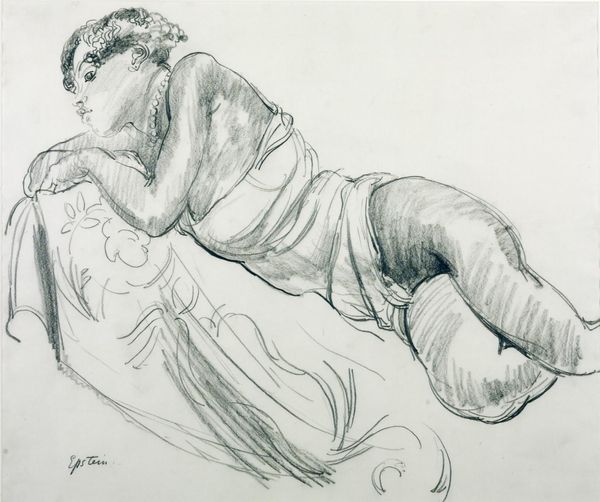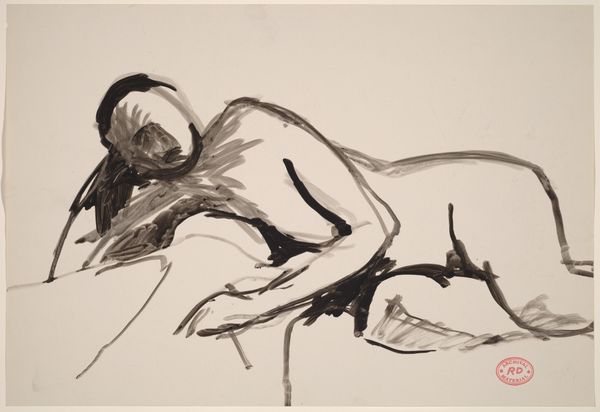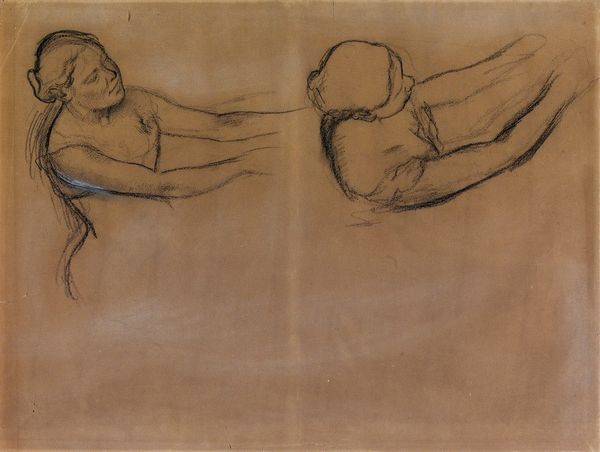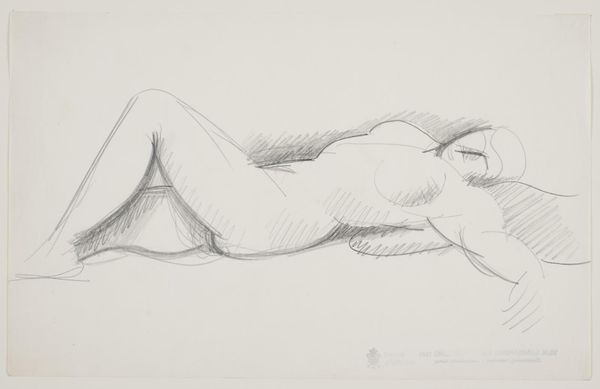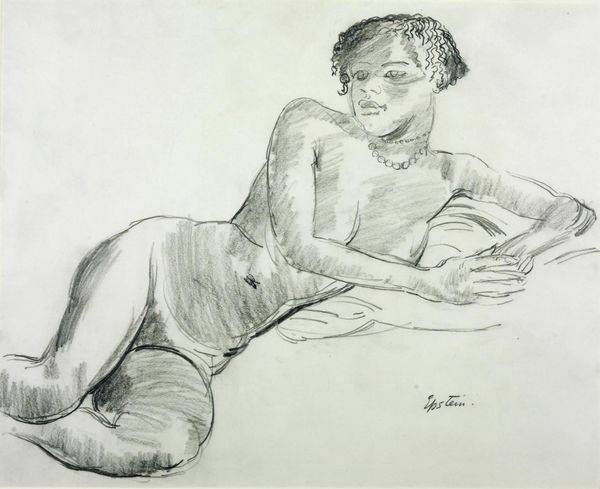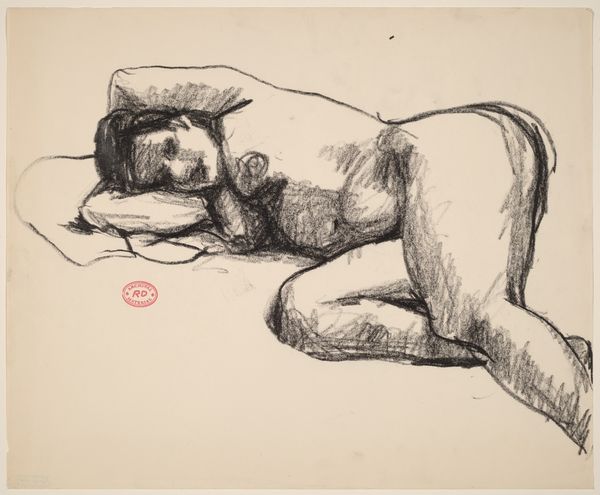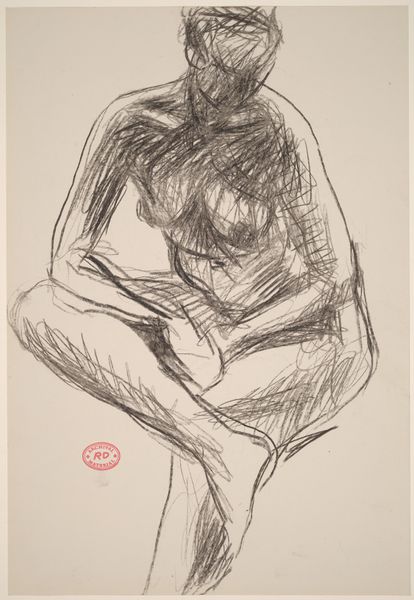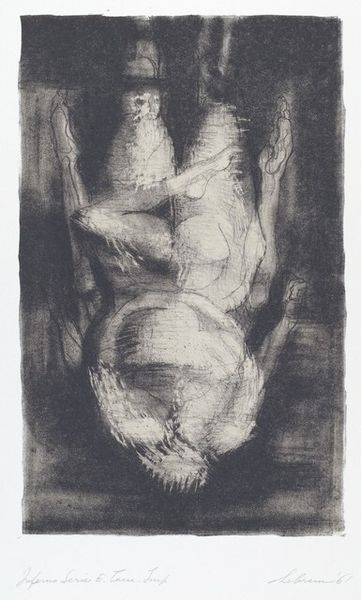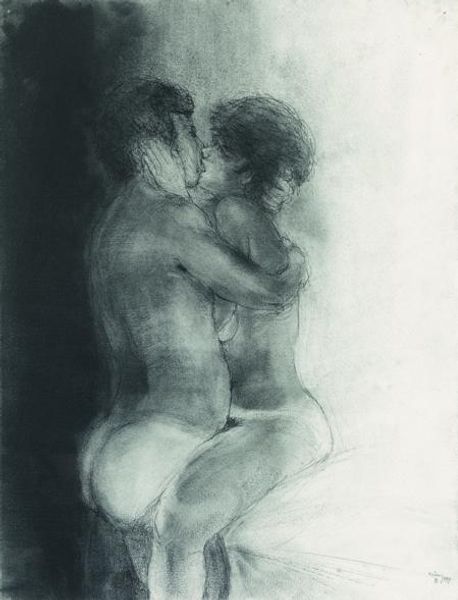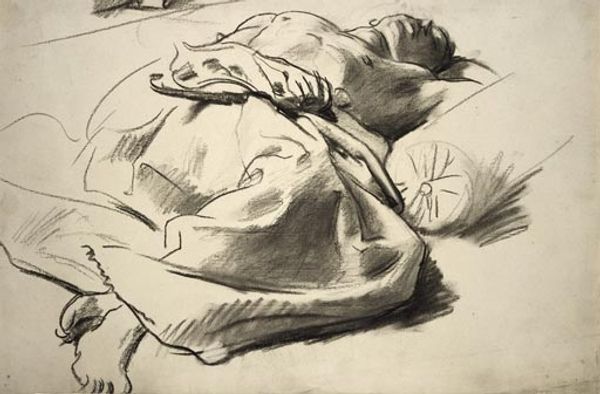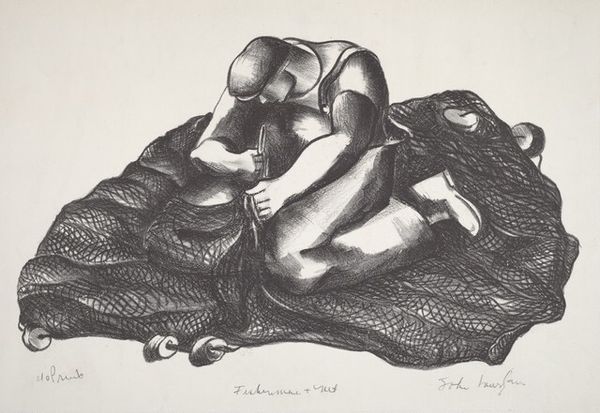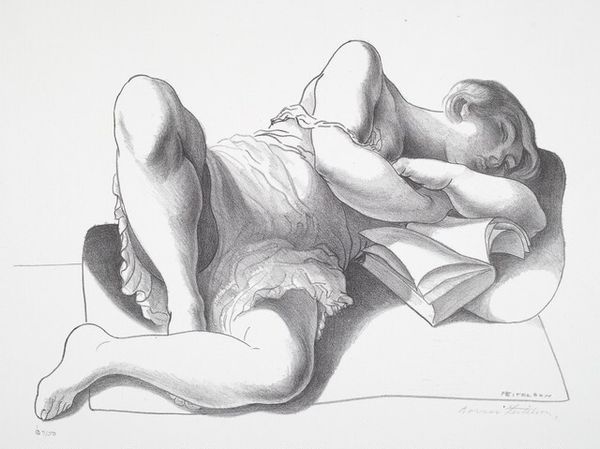
print, charcoal
#
portrait
# print
#
charcoal drawing
#
figuration
#
charcoal
#
nude
Dimensions: image: 151 x 200 mm sheet: 294 x 403 mm
Copyright: National Gallery of Art: CC0 1.0
Curator: Let’s discuss William Spratling's charcoal drawing from around 1932, titled "Niño." The print portrays a nude child, lying down, resting their head in their hand. Editor: It has this immediately melancholic feel, doesn't it? The charcoal creates a softness, but the posture—prone, almost withdrawn—speaks of something heavier than just youthful contemplation. Curator: Absolutely. Consider how childhood, across cultures, is often symbolized by carefree innocence. Yet here, that ideal is subtly challenged. Spratling lived and worked in Mexico, part of a generation grappling with evolving national identities. This child might echo deeper anxieties. Editor: I’m intrigued by that contrast – innocence versus anxiety. What social messages could he be pointing to, especially given Mexico's social climate in the '30s, still wrestling with the aftermath of revolution? The choice of a child almost makes it more poignant, like the promise of a new nation weighed down by past burdens. Curator: And it’s not simply a portrait; it borders on a representation of vulnerability. Think of how representations of children have been deployed to evoke pathos, solidarity or even, tragically, as an indictment against societal failings. Editor: Definitely. And looking closer at the figure itself—the way the body seems both relaxed and tense—do you think this could also reflect the societal expectations placed on young boys even then? Curator: It's plausible. The way the artist manipulates light and shadow does emphasize the child’s musculature even at a young age, subtly suggesting future roles and responsibilities already being projected onto him. It certainly steers away from a simple idealized depiction. Editor: I appreciate how the image compels us to consider what we expect, what we demand, even from those just entering the world, reflecting power structures that go beyond just the image. Curator: It's a testament to how an image can be both delicate and potent. Editor: Exactly. Art as an act of cultural reflection, and as an agent for change, even in a simple image.
Comments
No comments
Be the first to comment and join the conversation on the ultimate creative platform.
